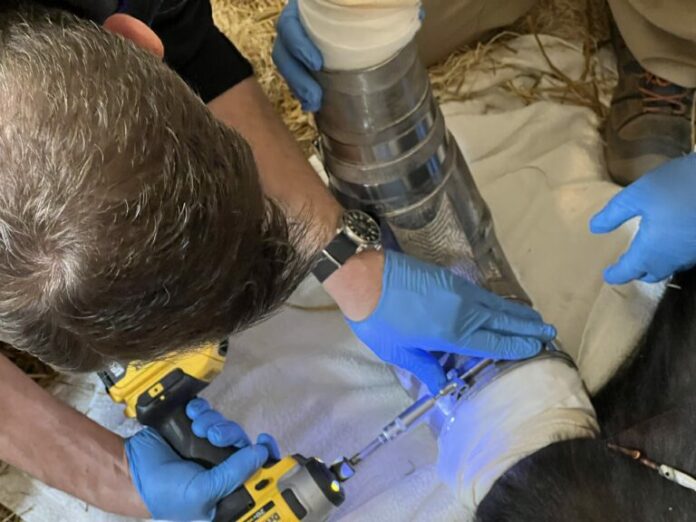The first time we talked about the use of metal 3D printing in a zoo, it was 4 years ago when Cincinnati Zoo & Botanical Garden, a zoo that harbours about 2,000 animals, called upon GE Additive’s AddWorks consulting team to invent a way animals could easily find their food.
Recently, the zoo turned to the GE Additive team again – this time for the manufacture of a custom 3D-printed cast for Gladys. Gladys is an eleven-year-old gorilla that recently underwent surgery for a broken humerus. “She must have fallen in just the wrong way to break her arm, but the result was a complete, oblique facture of her distal humerus,” Victoria McGee, Cincinnati Zoo’s Zoological Manager of Primates said.
Since this is not a frequent injury, post-operative pain was of great concern for the vet staff. Therefore, they first developed a plan that utilized multi-modal analgesics to ensure that Gladys was comfortable throughout the perioperative period and thereafter turned to GE Additive for the creation of a studier cast.
“We see this sort of fracture in kids all the time,” said Dr. Kevin Little, one of the orthopedic surgeons from Cincinnati Children’s who helped perform the operation. “This is a bit more complicated because gorillas have a lot of muscle and bigger, denser bones.”
The 3D printed cas was then made in titanium which was considered more durable durable than a traditional cast to prevent Gladys from re-injuring her arm during the healing process. We believe the challenges encountered for the feeder were not the same this time as zoologists were already familiar with what AM can do. At the manufacturing level, it may be not stated but GE Additive is known for its Direct Metal Laser Melting Process, EBM and Binder Jetting technologies.
“Gorillas hang from their arms, which is very different from a lot of the pediatric patients we care for. It’s also difficult to help Gladys understand what we have done surgically and why we need to protect the repair,” said Dr. Jaime Denning, Orthopedic Surgeon Liaison for Trauma at Cincinnati Children’s. “That’s why we needed to use heavier-duty equipment and a stronger cast. We look forward to seeing Gladys get back to hanging once she heals.”
Gladys will be behind the scenes for at least six more weeks. Her care team is monitoring her closely and providing around-the-clock observation and treatments to make sure that she is getting nutrients, liquids, and pain medications. They are supporting her comfort level with the process, while also distracting her as needed to prevent the temporary cast from being destroyed, the zoo said in a press communication.
Remember, you can post job opportunities in the AM Industry on 3D ADEPT Media free of charge or look for a job via our job board. Make sure to follow us on our social networks and subscribe to our weekly newsletter : Facebook, Twitter, LinkedIn & Instagram ! If you want to be featured in the next issue of our digital magazine or if you hear a story that needs to be heard, make sure to send it to contact@3dadept.com


